Philips 55PFL6007 Review
Philips 55PFL6007
Philips' latest mid-range TV puts the company back on track.
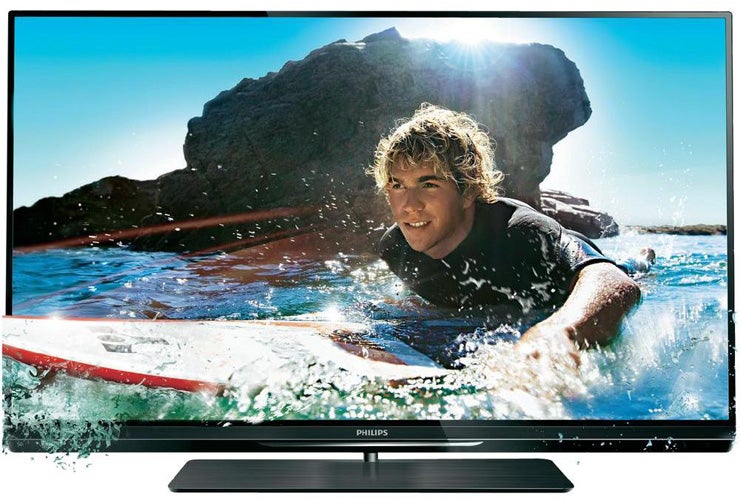
Verdict
Pros
- Class-leading passive 3D picture quality
- Excellent 2D picture quality
- Very good sound quality
Cons
- Underwhelming online service
- Slightly sluggish and complex operating system
- Input lag could impact gaming
Key Specifications
- Review Price: £1500.00
- 55in LCD TV with edge LED lighting
- passive 3D with four pairs of glasses
- Online TV services
- multimedia playback via USB
- Ambilight
Although Philips made a hugely impressive return to the TV fray with the recently reviewed Philips 46PFL8007, it’s the brand’s new PFL6007 series that’s more likely to make a mass market impact.
The main reason for this is simple economics. For at £1,500, the 55-inch Philips 55PFL6007T we’re looking at here costs quite a bit less than the 46-inch, higher-spec Philips 46PFL8007 model. Or you can get the 46-in Philips 46PFL6007 for just under £1,200.
Philips 55PFL6007 Design
Inevitably the relative affordability of the mid-range Philips 55PFL6007T does come with strings attached. We’ll get into these presently, but first we’re happy to report that despite being decent value for a 55-inch TV, the Philips 55PFL6007T is quite a looker. Its bezel is only slightly wider than 1cm across, and its rear is mightily trim too. The black frame is clearly more plasticky than the metallic one tucked around the PFL8007, but the set still feels robust, and the glossy finish hides the plastickiness well.
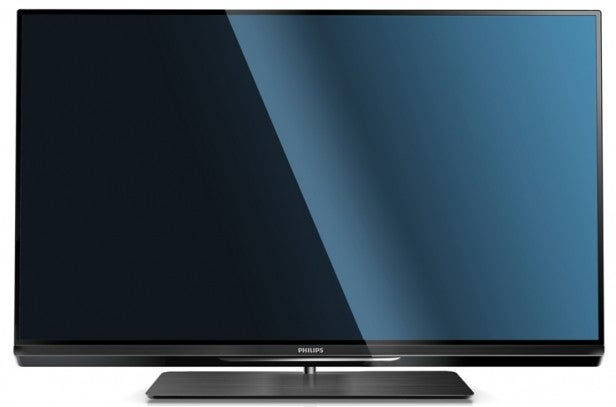
This being a Philips TV, the design is also illuminated, literally, by Ambilight. In this case you get strips of LEDs down the screen’s rear left and right sides, able to throw out a dynamic light field coloured to match the content of the images you’re watching. We’re never quite as convinced by this sort of ‘stereo’ Ambilight incarnation as we are when the lights are also applied to the top edge of higher-end Philips TVs, but it’s still a feature we anticipate most people will enjoy.
Philips 55PFL6007 Connectivity
For a mid-range model, the Philips 55PFL6007 is extremely well connected. It’s got four HDMIs for starters, along with a trio of USB ports capable of recording from the built-in Freeview HD tuner or playing back this little lot (deep breath): AVI, MKV, H264, MPEG-4 AVC, MPEG-1, MPEG-2, MPEG-4, WMV9/VC1 video files; AAC, MP3, and WMA audio files; and JPEG photos.
On top of this, the set’s network connections offer users further options, with both LAN and built-in Wi-Fi features in the mix. Via these you can either stream files off networked PCs and Macs via Philips’ SimplyShare DLNA 1.5 media browser or take the TV online with the Philips Net TV platform. Elsewhere the Philips 55PFL6007 also carries 3D playback supporting passive 3D playback as opposed to the Philips 46PFL8007’s active offering. What’s more, the Philips 55PFL6007 ships with four pairs of passive 3D glasses versus the two pairs of active 3D glasses you get with the PFL8007.
It’s not all positive on the accessories front, though. For unlike the PFL8007 range, the Philips 55PFL6007 doesn’t ship with either an included Skype camera or any glasses to support its two-player full-screen gaming feature. Both can be bought as optional extras, though.
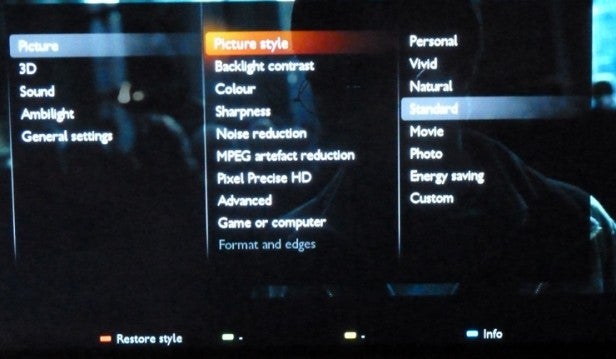
Delving into the Philips Net TV service, we find the same pros and cons discussed in our review of the Philips 46PFL8007. We’ll just sum things up here by saying that while the system’s presentation is good and Philips shows some signs of thinking on its feet in terms of its online operating experience, there isn’t enough content available at the moment to put Philips in the same online league as most other big TV brands right now.
We should add, too, that the Philips 55PFL6007 doesn’t ship with the rather brilliant two-sided, QWERTY keyboard-equipped remote control you get with the PFL8007 models, which proved extremely useful when web browsing or using social media. But then to be honest, we seldom, if ever, feel like web browsing or utilising Twitter of Facebook on a TV rather than a phone/tablet/laptop.
Video streaming services are what we really want from an online TV experience, so Philips’ provision of just the BBC iPlayer, YouTube, Viewster, Euronews, and iConcerts – though Blinkbox is expected to be added soon – is the real let down here.
The Philips 55PFL6007 is a few significant step downs from the PFL8007 series in terms of picture specification. For instance, the processing engine is Philips’ Pixel Precise HD rather than the flagship Perfect Pixel HD, meaning it’s got considerably less processing power to throw at picture improvements. It also lacks the extremely clever ‘local contrast’ algorithms that helped give the Philips 46PFL8007 so much picture punch.
Colour processing is reduced too, resulting in markedly fewer claimed shades (though you still get an alleged 4 trillion), and the native panel refresh rate is 100Hz rather than the 200Hz found on the PFL8007 range. This means the Philips 55PFL6007 ends up with a ‘400Hz’-like system once a blinking backlight and frame interpolation have been added to the mix, versus 800Hz on the PFL8007s.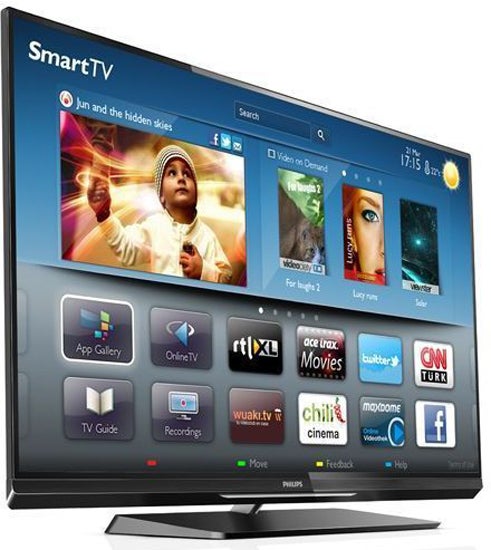
Philips 55PFL6007 3D Picture Quality
Almost bewildering for a passive set, the Philips 55PFL6007 3D picture quality is exceptional. We’re not sure how Philips has done it, but detail and sharpness levels almost rival active 3D – an achievement made all the more remarkable by the 55PFL6007‘s large screen size, which would usually be extra-revealing of passive’s usual sharpness shortcomings.
Also remarkable about the 3D efforts of the Philips 55PFL6007 is how well it creates its sense of 3D space. Depth levels seem more profound than we’re accustomed to seeing, but always feel natural and never strain your eyes.
There’s a startling degree of subtlety in the delivery of this depth too, enabling us to pick out 3D details we hadn’t really spotted before. For instance, during the Mother Knows Best song sequence in Tangled, at one point you can see the outline of a man’s face with big, sharp teeth painted on the floor, and on the Philips 55PFL6007 we could actually see the thick paint raised slightly above the floor below it.
Extrapolate this sort of depth subtlety and accuracy across and into a whole 55-inch 3D image, and you’ve got a 3D picture good enough to win over all but the most die-hard 3D cynics. Especially as the Philips 55PFL6007‘s passive 3D technology means you get to enjoy the sharp, deep, gorgeously layered images without the fatigue problems, flickering, brightness reduction and crosstalk ghosting problems commonly found with the rival active 3D format.
Trying to understand why the depth effect is so exceptional uncovers another key strength of the Philips 55PFL6007: its unusually clever handling/reproduction of light and shade. Differences in light levels in a 3D frame are a much over-looked part of creating a convincing 3D effect, so the 55PFL6007’s uncanny ability at rendering different levels of light across its screen – despite only using an edge LED lighting system with no local dimming – serves 3D images especially well.
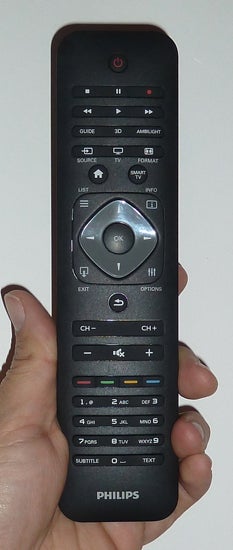
The Philips 55PFL6007 even manages to resolve plenty of shadowy detailing in the sort of dark areas that tend to be ‘flattened’ into empty black holes on all too many 3D TVs.
Yet more 3D cleverness finds the TV slightly emphasising (though not excessively so) the edges of objects, to help define them against their more distant backdrops. Even motion in 3D images looks strikingly natural. Personally we chose to use the Natural Motion processing on its Low setting, as this removes judder without causing many unwanted processing side effects. Though if you hate all motion processing on principle, then turning Natural Motion off doesn’t by any means destroy the 3D image.
Inevitably – especially given its large screen size – the Philips 55PFL6007 isn’t entirely free of those twin passive 3D disadvantages of visible horizontal line structure and some edge jaggedness. But these issues are less distracting than anticipated, presumably because there’s so much 3D excellence elsewhere.
It’s not often we find ourselves saying during a TV review that we had to drag ourselves away from watching 3D, but that was definitely the case with the Philips 55PFL6007. Just as well, then, that the set also proves a winner with 2D.
Philips 55PFL6007 2D Picture Quality
With HD, the fine detail levels of the Philips 55PFL6007 are nothing short of mesmerising, with the large size of the screen providing the perfect forum for showing off Philips’ traditional strength in this key area of picture quality. The impressive motion handling continues with 2D too, ensuring that detail levels don’t take a dive during action scenes.
Contrast continues to impress in 2D. Whites and light colours look bold and vibrant, yet the Philips 55PFL6007 can reproduce these dynamic elements alongside startlingly deep black levels. This ability also helps the TV produce reasonably deep blacks during predominantly dark scenes without crucifying the intensity of any bright bits.
To be clear here, the Philips 55PFL6007’s black level depths don’t rival those of the PFL8007, or the Sony KDL-40HX853. They are better than those of the vast majority of other mid-range TVs, however, especially as – and this is a critically important point – dark scenes suffer impressively little with the sort of backlight clouding flaws so common on rival models.
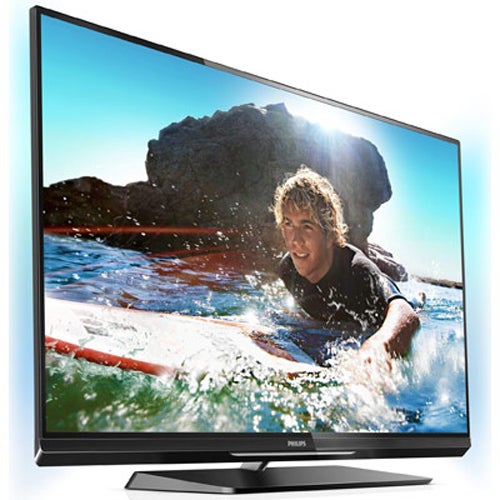
There was a touch of light ‘leakage’ in one area near the top left corner of our test sample’s screen, but its impact was subtle to the point of becoming negligible if you’ve got any ambient light around (or are driving the Ambilight system hard).
The last key element in what makes the Philips 55PFL6007’s HD pictures tick is their colour handling. The available palette is extreme, and there’s plenty of finesse in the way tonal subtleties and blends are presented. As a result, tones look winningly natural, even during dark scenes (where colours are impacted by grey or blue overtones on lesser LCD/LED TVs).
We must stress that the Philips 46PFL8007 delivers even more sophisticated and subtle colours, giving its pictures a more finessed and high-end finish. But the 55PFL6007’s colours are still admirable for its market position.
The Philips 55PFL6007’s upscaling of standard definition, meanwhile, also isn’t as assured as that of the 46PFL8007. But it’s pretty good by the standard of other mid-range TVs around, doing the key business of adding sharpness and detail without introducing noise or excessive motion blur, and without causing colours to lose their naturalism.
Aside from the minor problems already noted, the only other complaint we can muster about the Philips 55PFL6007’s picture performance is that just occasionally its desire to produce deep blacks alongside bright whites and colours can go a touch too far, leading to a slightly stark-looking image where the darkest areas lack shadow detail. Gamers, too, might be disappointed to note that we measured an input lag figure of around 67ms for the 55PFL6007 – even using its game mode and turning off all the processing we could see – that’s more or less double what we’d ideally like to find. But at least this figure is lower than the sort of numbers recorded from many other passive 3D TVs.
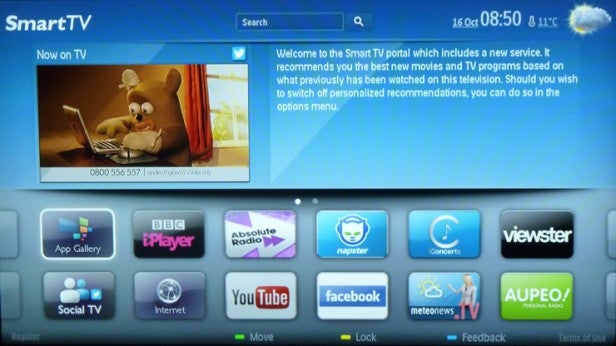
Joining the Philips 55PFL6007’s big and mostly beautiful pictures is a startlingly potent soundstage. By sticking two large drivers on the TV’s rear, Philips has managed to largely avoid the audio flimsiness you get with most super-slim TVs. Certainly there’s far more bass, treble range/clarity and good old-fashioned power in the 55PFL6007’s audio than you get from any other similarly skinny TV we can think of. Aside, perhaps, from Sony’s HX853s and Philips’ own 46PFL8007, both of which cheat – in a good way – by using speakers in their stands.
Just occasionally the ambition of the Philips 55PFL6007’s speakers over-reaches their abilities, leading to some humming distortion in the mid-range. Especially with deep male voices. But you can minimise this by tweaking the audio settings, and in any case it seems a small price to pay for all the audio strengths.
Philips 55PFL6007 Verdict
There are a few minor issues with the Philips 55PFL6007. Its Philips Net TV Smart TV system is off the pace, for instance, and it’s quite complicated to use. Some people will prefer the active 3D format on such a large screen, too.
Overall, though, the Philips 55PFL6007 is actually a bit of a corker – even in 3D mode. And as such it importantly proves that the rejuvenated Philips TV brand isn’t only serving up quality at the top end of its new range.
How we test televisions
We test every TV we review thoroughly over an extended period of time. We use industry standard tests to compare features properly. We’ll always tell you what we find. We never, ever, accept money to review a product.
Trusted Score
Score in detail
-
Features 9
-
3D Quality 10
-
Value 8
-
Design 8
-
2D Quality 9
-
Sound Quality 9
Features
| Size (Inch) | 55in |
| Display Type | LED |
| Max. Resolution | 1920 x 1080 |
| Full HD 1080p | Yes |
| Digital Tuner | Yes |
| Freeview HD | Yes |
| 3D Ready | Yes |
| Contrast Ratio | 500,000:1 |
| Refresh Rate (Hertz) | 400Hz |
Connectivity
| HDMI | 4 (v1.4) |
| Component | 1 |
| Composite | 1 |
| Scart | 1 (RGB) |
| Digital Audio Out | 1 (optical) |
| Headphone | 1 |
| Ethernet | 1 |
| WiFi | Yes (built-in) |
Physical Specifications
| Height (Millimeter) | 744.32mm |
| Width (Millimeter) | 1240.8mm |
| Depth (Millimeter) | 30.2mm |
| Weight (Gram) | 22000g |

